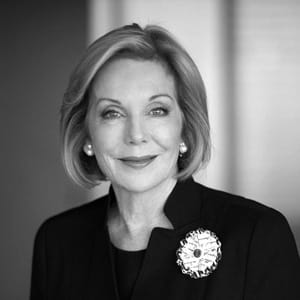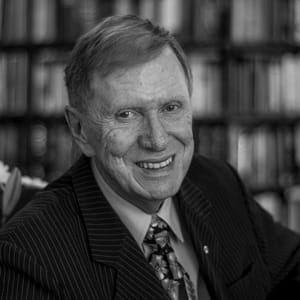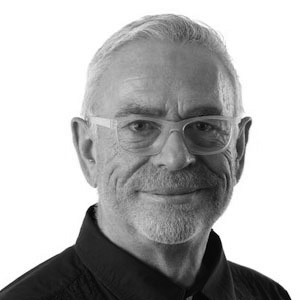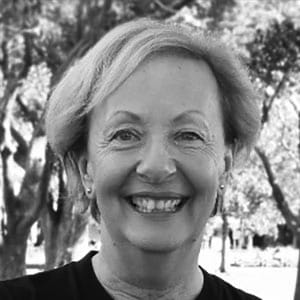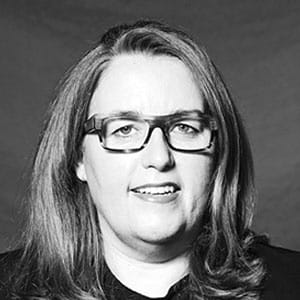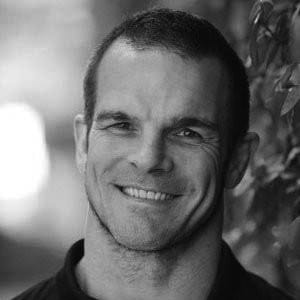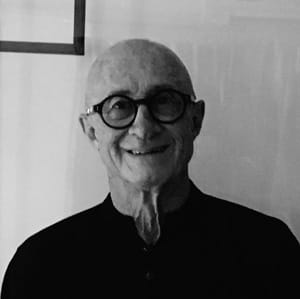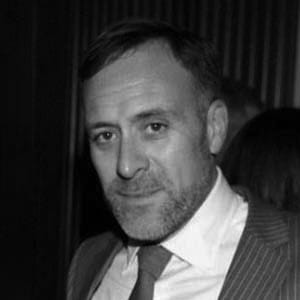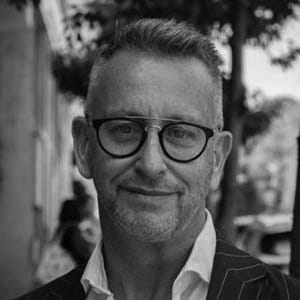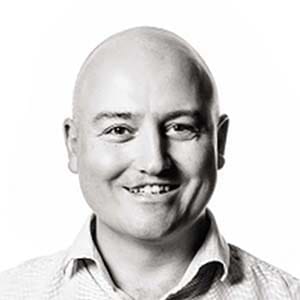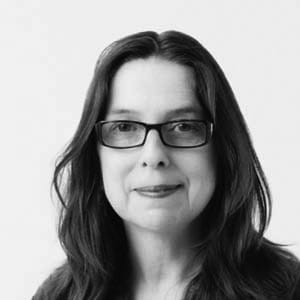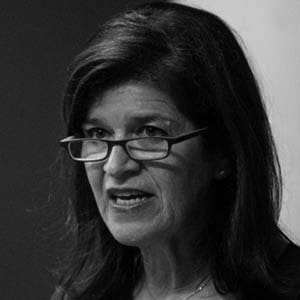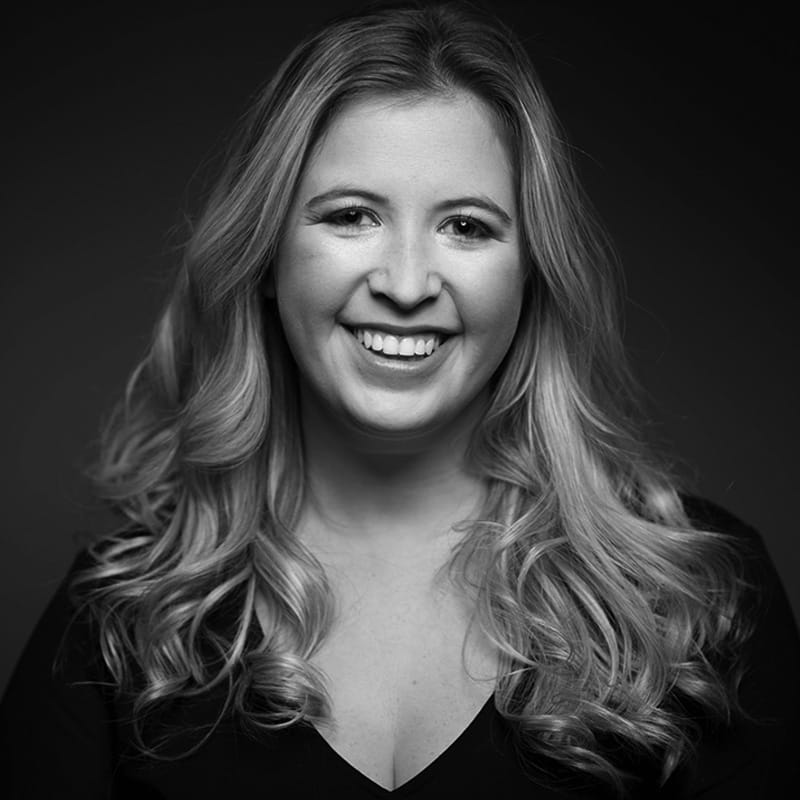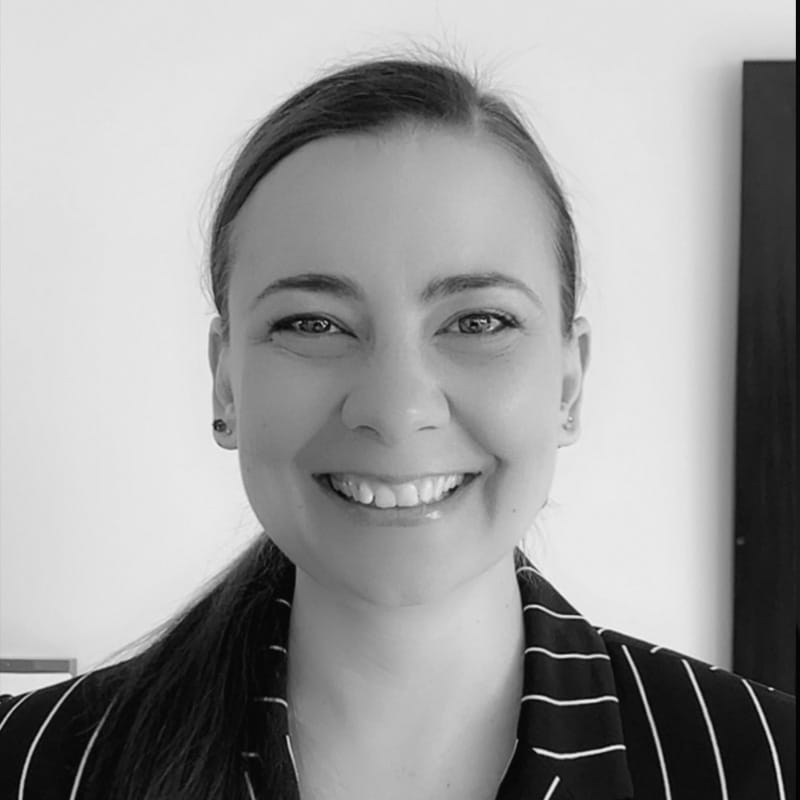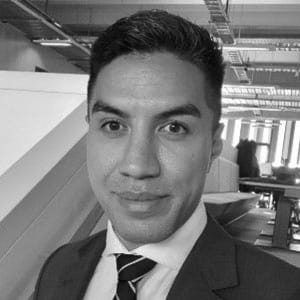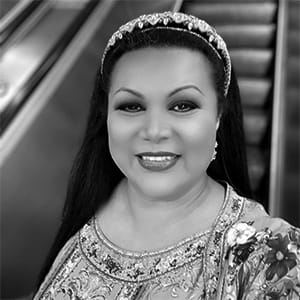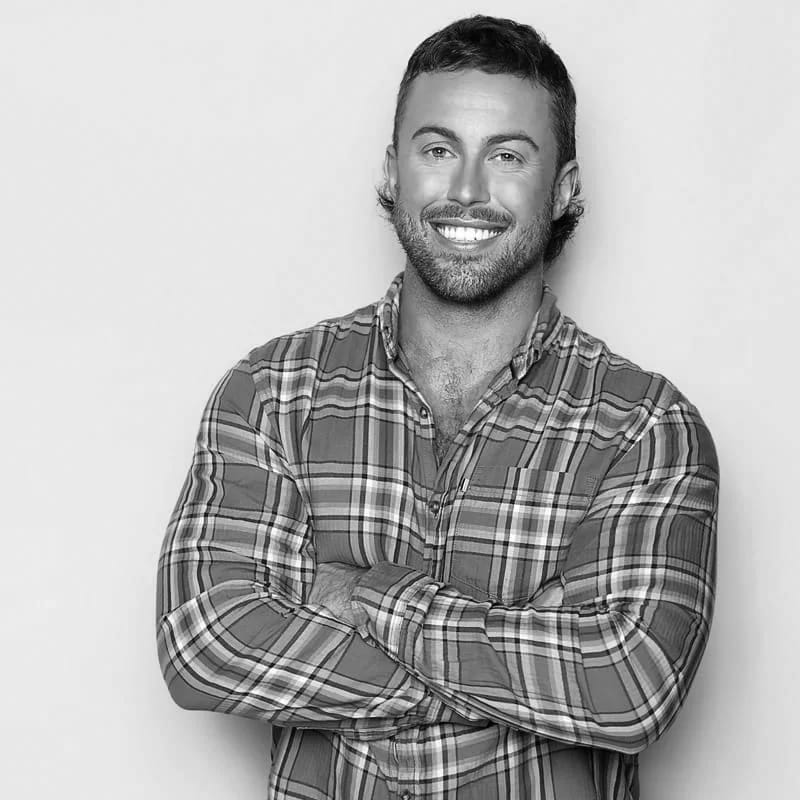About Us
In February 2024, Qtopia Sydney opened our doors to share the journey of the Queer community in Australia.
From the earliest days more than 65,000 years ago told through the eyes of our Indigenous brothers and sisters, the journey from illegality to legality, inequality to equality under the law and, finally - the vital role of identity and inclusion.
Our History
Our
History
Before Professor Cooper died, he shared with his wife Dorrie, his vision of a space that would highlight the medical, humanitarian, political and community response to HIV/AIDS in Sydney.
Making the Dream a Reality:
Our Founder, David Polson AM was one of the first 400 men to be diagnosed with HIV/AIDS in Australia. He is one of only 32 still alive today. Having participated in 28 drug trials, David Polson is adamant that his survival and life are due to the care, love and commitment of Professor David Cooper.
When David learned of Professor Cooper’s dream, he made it his mission to make it a reality. From there, Qtopia Sydney was born. Along with a group of dedicated people, caring sponsors and vocal supporters, Qtopia Sydney not only tells the story of HIV/AIDS, but celebrates the growth and spirit of the LGBTQIA+ community in this country and beyond.
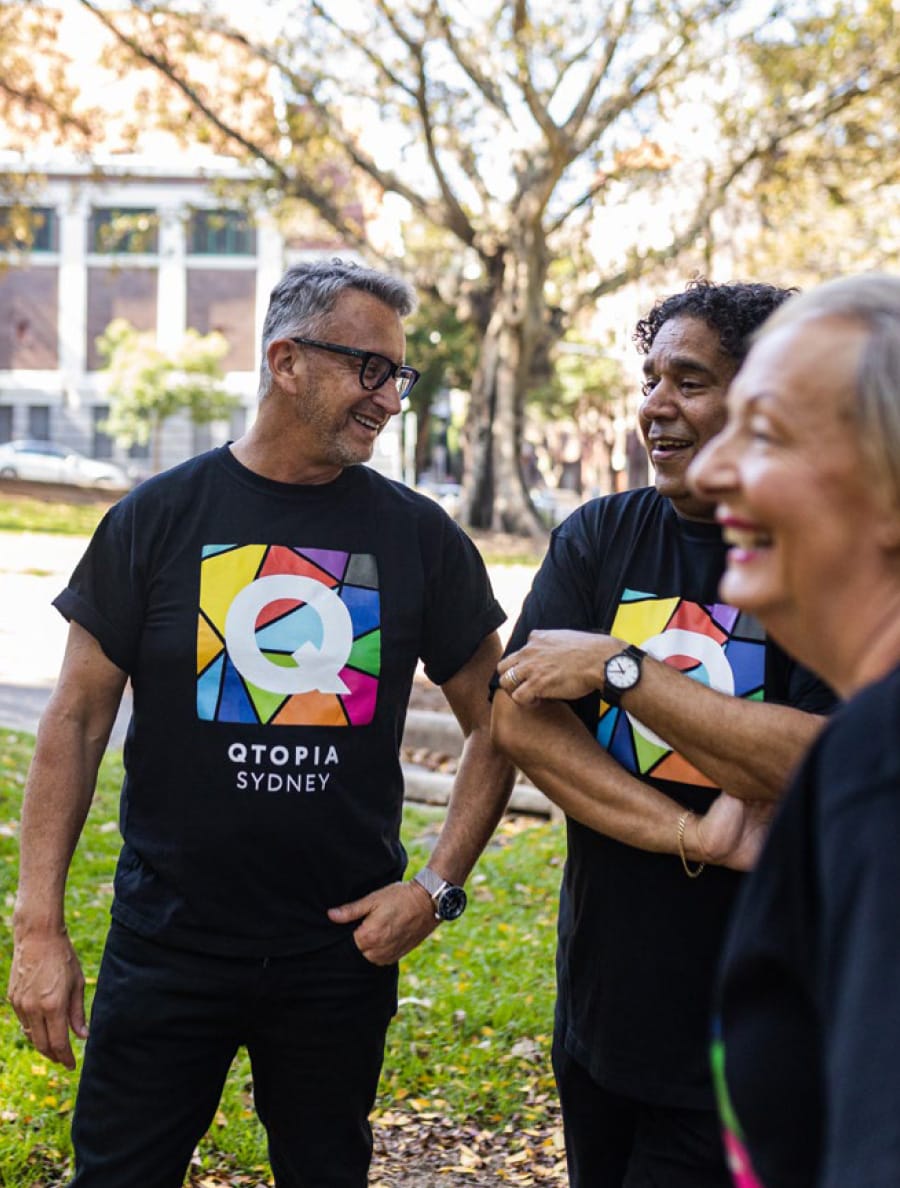
“I mean, the messages were overwhelming in terms of negativity. And we had no positive role models at all. Unlike today, of course, we've got lots of positive role models, but none existed at the time.”
Robyn Kennedy, 78er
Sharing History
Click below to see interesting events as they happened over the years
People Living with AIDS (PLWA NSW) was founded
In 1988, as a response to the NSW HIV/AIDS epidemic, various advocates, activists and supporters deeply concerned about the impact of HIV/AIDS, gathered at the Trade Union Club, in Foveaux Street, Surry Hills, to form People Living with AIDS NSW (PLWA NSW).
Malcolm Cole dresses as Captain Cook, Rodney Junga Williams as Joseph Banks, and members of the Sydney Aboriginal and Torres Strait Islander community in a Mardi Gras float.
1973 a group of Aboriginal leaders was subject to a racist attack by staff of the Rex Hotel in Kings Cross; in response Sydney Gay Liberation zapped the venue, calling for a boycott and handing out this flyer, the text of which reads: “Don't drink here Gay Liberation asks all patrons of the Rex Hotel, Kings Cross to support a black ban of this hotel in protest against the racist attack on a group of Aboriginal leaders by 7 bouncers with the support of the manager. The Aboriginal leaders were drinking in the Garden Island Bar on Thursday 12 February. They were all viciously bashed and kicked, and subjected to the most racist insults. Gay Liberation in Australia actively supports the Aboriginal Civil Rights struggle and all similarly oppressed minority groups.
Qtopia Sydney opens.
A New South Wales special commission inquiry into LGBQ+ hate crimes examines 32 deaths and finds that police failed to properly investigate potential gay hate crimes.
The Kirby Institute study finds that inner Sydney could become one of the first countries to “virtually eliminate” HIV transmissions, with new infections decreasing dramatically. Increased access to HIV treatment and PrEP was cited as a key reason for decreased transmissions.
Sydney hosts the 8th international WorldPride.
All jurisdictions of Australia have legally abolished the ‘gay panic defence’ since 1 April 2021.
Queensland becomes the first state to ban conversion therapy, Victoria, Western Australia and the ACT follow in 2021.
All states and territories have passed expungement schemes which allowed men who had been charged under anti-homosexuality laws to apply to have their convictions removed from the record.
Pre-exposure Prophylaxis PrEP becomes available on the Australian Pharmaceutical Benefits Scheme.
After a national vote, conducted through a voluntary postal survey, a result of 61.6% of Australians vote in favour of marriage equality including majorities in all states and territories. On December 9th the Federal parliament updates the Marriage Act to allow same-sex marriage.
The Family Court of Australia rules in favour of allowing transgender children access to cross-sex hormone treatment (known as stage 2 treatment) without court approval needing to be sought.
EPIC-NSW trial begins, the first large-scale Australian study to demonstrate efficacy of Pre-exposure Prophylaxis over a follow up period of up to three years. The study enrolled 9,709 study participants of whom 9,596 were dispensed PrEP, between March 1 2016 and April 30 2018.
Initially established in Victorian schools in 2010, the ‘Safe Schools Coalition Australia’, seeks to combat anti-LGBTQI bullying launches a nationwide campaign in 2014.
First time an Australian birth certificate indicates that both members of a same-sex couple were the legal parents of a child at birth.
Federal Parliament passes the first nationwide anti-discrimination law in the form of the ‘Sex Discrimination Amendment (Sexual Orientation, Gender Identity and Intersex Status) Act 2013, the provisions of which extended to intersex people.
In the United States, The Federal Drug Administration first approved Pre-exposure Prophylaxis, (PrEP) under the brand name Truvada. By 2014 the CDC released guidelines recommending PrEP use among high-risk groups, including men who have sex with men and transgender people.
Tony Biffa, believed to be the world’s first Intersex mayor, is elected in the City of Hobsons Bay Melbourne.
Same-sex couple adoption is legalised in: New South Wales 2010; Tasmania 2013; Victoria 2015; Queensland 2016; South Australia 2017; and the Northern Territory 2018.
Adoption Amendment (Same Sex Couples) Bill 2010 (No 2), receives assent. It enables same-sex couples in NSW to adopt children.
The Australian Defence Force allows Transgender individuals to serve openly.
The Rudd government legally recognised same-sex de-facto relationships and amended 85 pieces of Commonwealth legislation to allow same-sex couples equal access to a range of areas including taxation, superannuation, health, social security, aged care, child support, immigration, citizenship and veterans’ affairs.
The ACT’s Civil Union legislation passed by the ACT Legislative Assembly is disallowed by the Governor General on instruction from the Howard government.
The City of Sydney creates the Relationship Declaration Program offering limited legal recognition for same-sex couples.
The Coalition Howard government amends the Marriage Act 1961 to explicitly exclude same-sex couples from marriage. Marriage is defined as “the union of a man and woman to the exclusion of all other, voluntarily entered into for life”. This comes two months after the United Kingdom legalised same-sex Civil Unions.
Crimes Amendment (Sexual Offences) Bill 2003 receives assent.
This Bill, introduced by the Carr Labor Government, provided for an equal age of consent in New South Wales - the age of consent was set as 16 years of age for both homosexual and heterosexual intercourse.
Sydney hosts the 6th Gay Games.
The Netherlands becomes the first country in the world to legalise same-sex marriage.
‘Property (Relationships) Legislation Amendment Bill’ 1999 receives assent. This Bill, introduced by the New South Wales Carr Labor Government, Amended the De Facto Relationships Act 1984 and numerous other acts to include de facto same-sex couples.
Independent MP Clover Moore introduces the Significant Personal Relationships Bill 1997, the first Bill introduced into the NSW Parliament to provide for comprehensive legal recognition of same-sex relationships. It lapsed on 3 February 1999.
Tasmania becomes the last state in Australia to decriminalise male homosexual acts.
Transgender (Anti-Discrimination and Other Acts Amendment) Bill 1996 receives assent.
Triple combination therapy becomes the standard for HIV treatment. Viral load testing is developed and can predict the rate of progression of HIV.
Independent MP Clover Moore introduces the Anti-Discrimination (Transgender) Amendment Bill 1994 to make it unlawful to discriminate against a person on the ground of the person, or a relative or associate of the person, being transgender.
Anti-Discrimination (Amendment) Bill 1994 receives assent.
Introduced by the Fahey Liberal Government, the Bill outlaws vilification of a person on the grounds of HIV/AIDS infection
The first televised broadcast of the Sydney Gay and Lesbian Mardi Gras, by the ABC. The telecast is broadcast by the ABC on the night following the Parade. The raw footage of the parade, with commentary by Robyn Archer and the late Nick Enright, was edited and interspersed with interviews with some Parade participants.
A UN Human Rights Committee decides that the Tasmanian Liberal Government contravenes a human rights treaty signed by Australia.
Tasmanian gay rights activists Nick Toonen and Rodney Croome appeal the Tasmanian anti-homosexual laws to the United Nations Human Rights Committee.
By 1990, details are emerging of a wave of gang murders of gay men, that killed as many as 88 gay men, homicides and gay-bashings were being committed at nearly three times the rate of police capacity or willingness to solve them.
The largest act of gay rights civil disobedience in Australian history occurs when Hobart City Council bans a stall collecting signatures on a petition calling for homosexuality to be decriminalised, and ordered the arrests of anyone defying the ban. Over seven weeks 130 arrests were made. Eventually the council backed down and allowed the stall.
In 1987, October, the AIDS Memorial Quilt is displayed for the first time on the National Mall in Washington, DC. The Names Project was thought up by gay activist and HIV educator, Cleve Jones, in San Francisco in 1986.
The Australian AIDS Memorial Quilt project is established and first displayed on World AIDS Day on December 1.
The controversial Grim Reaper television commercial is shown for the first time on Australian television by the national HIV/AIDS Education Campaign. This is the first campaign to directly target the issue of heterosexual transmission and transmission outside of “high-risk groups” generally.
Ward 17th South at St Vincent’s Hospital in Darlinghurst is officially dedicated as an AIDS Ward with 12 beds. By 1987 approximately half of all people with HIV/AIDS in Australia have been treated at St. Vincent’s.
The last gay man to be arrested in Australian history for engaging in sexual conduct with another man on the side of the road in a car in Hobart Tasmania. He is sentenced to eight months jail.
Crimes (Amendment) Bill 1984 New South Wales, introduced by Premier Neville Wran as a private member’s bill, receives assent. It decriminalises consensual homosexual sex for males aged 18 and over.
The Bobby Goldsmith foundation is formed in honour of one of Australia’s first deaths due to AIDS related illness. An athlete and active gay community member Bobby Goldsmith won 17 medals in swimming at the first Gay Games in San Francisco in 1982.
Tiresias House, a refuge for transsexuals and sex workers opens on 75 Morgan Street, Petersham, Sydney. It was initiated by Trans activist Roberta Perkins and would change its name 6 years later to the ‘Gender Centre’.
Police raid the “old” Club 80 at 48 Little Oxford Street. 11 men are handcuffed and taken to Darlinghurst Police Station and charged with scandalous conduct and indecent assault on a male.
Australia’s first AIDS death occurs at Melbourne’s ‘Prince Henry’s Hospital’ a 43 year old Australian who had lived in the US.
The Sydney Vice Squad led by Detective-Inspector Ernie Shepard raids the new Club 80. 11 men are charged with ‘scandalous conduct’. The following day 500 people meet at Holt Street in response to this raid. 300 march to the Darlinghurst Police Station.
Anti-Discrimination (Amendment) Bill 1982 receives assent.
This Bill amended the Anti-Discrimination Act, 1977, to inter alia render unlawful, in certain circumstances, discrimination on the ground of a person's homosexuality.
Transgender sex workers Vicky Harris and Phillis McGuiness are charged for soliciting ‘Vice Squad’ detectives, in Darlinghurst Sydney. The two transgender women are charged as men, at a time when sex work was legal, but sex between men was a crime. The Australian Transsexual Association supports their appeal to the Supreme Court. Their case is the impetus for the first Transgender protest in Australia organised by Trans activist Roberta Perkins on October 2nd 1982.
New South Wales becomes the first state in Australia to prohibit discrimination against homosexuals, despite the fact that male acts of homosexuality remain illegal in New South Wales for another two years. The NSW Anti-Discrimination Act is amended to include Homosexuality after the adoption of a Government Bill moved by Premier Neville Wran.
Professor Ron Penny, of St Vincent’s Hospital in Sydney, identifies the first case of AIDS in Australia in an American tourist.
Barrie Unsworth MLC introduces the Crimes (Homosexual Behaviour) Amendment Bill 1982 which provides for limited homosexual law reform. It subsequently passes the Legislative Council but is defeated in the Legislative Assembly.
The Star publishes Australia’s first item on a new disease affecting gay men in the United States in a round-up of international news. Australian editions of ‘Time’ and ‘Newsweek’ run the first mainstream press stories about the epidemic.
The Centre for Disease Control in the United States publish a report by Dr Michael Gottlieb in its Morbidity and Mortality Weekly Report (MMWR) about a rare illness, Pneumocystis, infecting gay men in Los Angeles. This is referred to as the first official report on what will become the AIDS epidemic.
30 people are detained by police after a raid on the Rex Hotel, Kings Cross.
The Gay Rights Lobby is formed by Lex Watson and Craig Johnston
A candlelight rally, a morning march through Sydney streets and a Gay Mardi Gras attracting several thousand people celebrates the 10th anniversary of the Stonewall riots in New York and commemorates the 1st anniversary of Sydney’s Gay Mardi Gras. A Saturday morning march ends with a rally in Hyde Park. 5000 take part in the second Gay Mardi Gras that night.
The Sydney Morning Herald publishes the names, addresses, jobs of those arrested at the first Mardi Gras
Hundreds protest outside Liverpool Street Court for the release of the Gay Mardi Gras arrests, a further 7 more are arrested. July 15th, over 1,000 protestors march through Sydney streets to Darlinghurst Police Station demanding all charges be dropped against the Mardi Gras arrests, a further 14 more are arrested.
Australia’s first Mardi Gras Parade takes place with 500 marching in Sydney. The lead sound truck is taken by police and the parade spontaneously moves to Kings Cross. The crowd grows to 2000 and subsequently 53 are arrested, some seriously beaten by police.
Ron Austin, Lance Gowland and others attend a meeting of Gay Solidarity Group at Sydney University where they propose the idea of a night time Mardi Gras as part of the International Day of Gay Solidarity. Lance Gowland offers to take responsibility for the night time event, subsequently obtaining the Police permit for the march and renting the lead truck. The event is included on the poster as “festival 10pm Taylor Square”.
During an informal conversation following a meeting at CAMP NSW rooms at 33A Glebe Point Road about the forthcoming International Day of Gay Solidarity, Ron Austin refers to the footage of the San Francisco Freedom Day Parade and suggests there should be a street party with people in costume of fancy dress. The late Marg McMahon, a lesbian activist responds with “You mean like a Mardi Gras’. Ron later discusses the idea with activists Lance Gowland, Dr Jim Walker and others.
First gay film festival is held at the Paris Theatre (site now occupied by the Connaught Apartment block). Footage of people in costume in the San Francisco Freedom Day Parade inspires Ron Austin, a CAMP Actions Group member – particularly a man with butterfly wings carrying a sign which read “In a world full of caterpillars it takes balls to be a butterfly”.
In March 1978, the San Francisco-based ‘Gay Freedom Day Committee’ contacted Australian activists calling for a day of solidarity to support a march planned for the anniversary of the Stonewall riots in New York 1969. In response ‘The Gay Solidarity Group’ formed in Sydney to mark ‘International Gay Solidarity Day’ on 24th June 1978.
South Australia becomes the first Australian state to fully decriminalise homosexual acts, and the first jurisdiction in the English common law world to make no distinction between homosexual and heterosexual.
‘1st National Homosexual Conference’ is held in Melbourne, with the support of the ‘Australian Union of Students’ (AUS) is held with 800 people attending.
The Australian Parliament passes a motion (moved by former Liberal Prime Minister John Gorton and “seconded” by Labor Minister Moss Cass) in favour of decriminalising homosexual acts by consenting adults in private. The Federal Parliament votes 60-40 for the Gorton-Cass motion in favour of decriminalising homosexual acts. Subsequently the 'Commonwealth Public Service Board’ investigates changing its recruitment policy.
‘The Royal Australian and New Zealand College of Psychiatrists’ declare homosexuality as no longer a mental illness, the first such body in the world to do so. However Trans people are still classified as disordered until 2013.
Australian Broadcasting Company (ABC) program ‘Chequerboard’ showcases the first non-fictional televised gay male kiss in Australian history between Peter de Waal and his partner Peter Bonsall-Boone CAMP NSW secretary. The documentary on gays and lesbians also features an interview and kiss between Sue Wills and her partner Gaby Antolovich.
Australian Soap Opera ‘Number 96’ becomes the first television show to depict an openly gay character, law student and later lawyer Don Finlayson. In 1973 it showcases the first Transgender television character played by Trans performer ‘Carlotta’.
Dr. George Duncan, Australian law lecturer at the University of Adelaide, is murdered, drowning after being thrown in the Torrens River in Adelaide, by men suspected to be police officers. Public outrage generated by the murder becomes a catalyst for homosexual law reform which leads South Australia to become the first Australian state to decriminalise ‘buggery’.
Australian academic Dennis Altman’s ‘Homosexual: Oppression and Liberation’ is published in New York.
‘William and John’ Australia’s first commercial gay magazine is published. It closes on March 1st 1972, after 8 issues.
‘CAMP Inc.’ (later ‘CAMP NSW’) holds its first public general meeting chaired by Dr Ian Black. John W Australian Broadcasting Company (ABC) ‘This Day Tonight’ program showcases the first lesbian kiss on Australian television. are and Christabel Poll are elected co-convenors.
‘Campaign Against Moral Persecution Incorporated’ (CAMP Inc.) is formed, it is the first LGBTQIA+ rights group in which its founders openly identified as gay and lesbian. John Ware and Christabel Poll announced its formation in ‘The Australian’ newspaper. This marks a watershed moment in the establishment of the gay rights movement in Australia. The word ‘camp’ was chosen over the more American ‘gay’, as it was more widely used to describe homosexual men and women.
Australian Broadcasting Company (ABC) ‘This Day Tonight’ program showcases the first lesbian kiss on Australian television.
‘Daughters of Bilitis’, formed in Melbourne, becomes the first Lesbian civil and political rights movement in Australia. In mid 1970, ‘Daughters of Bilitis’ rejected the United States group and its radicalisation, renaming itself the ‘Australasian Lesbian Movement’ (ALM).
‘The Homosexual Law Reform Society’, forms in Canberra. Founded by Dr. Thomas Maunter and Michael Landale after the conviction and jailing of a Canberra man. The formation of the society also comes in response to the first draft of an ‘ACT Crimes Act’ which includes the crimes of ‘buggery and gross indecency’. In response the Society draws up its own ‘Crimes Act’.
The Stonewall Riots in New York City take place, in response to police raids on the Stonewall Inn, in Greenwich Village. These lead to the formation of the Gay Liberation Front which gives impetus to the formation of similar gay liberation groups around the world.
‘Capriccio Theatre Restaurant’ opens at 163 Oxford St. Darlinghurst Sydney, run by lesbian Dawn O’Donnell. While it was later renamed ‘International Vanities', and this was featured on the venue's signage, the community still called it ‘Caps’. This marks the beginning of Oxford Street’s history as the ‘Golden Gay Mile’, with many queer venues opening over the 1970s.
The Boomerangs social club established. While some claim it was named after the Boomerang Street beat, its founder claims he wanted an Australian name. The club was the first social club to have a float in Mardi Gras (1982) and raised money for other gay organisations including the Gay Counselling Service and Gay Rights Lobby.
In the United Kingdom ‘The Sexual Offences Act’ granting limited homosexual law reform in England and Wales, receives royal assent.
This law change elicits a shocked response in the New South Wales parliament and other States, with the New South Wales Attorney General saying it will never happen in New South Wales.
The Pollynesians social club established at a meeting at the home of Dallas (Polly) Perkins. The club organises dances, picnics, weekends away and other social events including the annual Polyimpics.
The long running cabaret show ‘Les Girls’ begins in Sydney’s Kings Cross, running from 1963 to 1994 (moving to 11 Oxford Street for a period in the 1970s). Launched by Sammy Lee and Reg Boom on the corner of Darlinghurst Road and Rosalyn Street. The show was performed exclusively by heavily costumed male and Transgender performers. Australian Transgender performer Carol Spencer known as ‘Carlotta’ becomes the most famous performer in ‘Les Girls’. It also spawned a second ‘Les Girls’ in Melbourne, which ran from the 1970s to the mid 1980s, as well as touring groups.
Camp drag venue 'The Purple Onion’ opens at 83 Anzac Parade in Kensington Sydney (in the former Mad, Mad World Coffee shop). Dormie McIver, Bob Wood and Barry Day open ‘The Purple Onion’.
Australia’s first full time drag club ‘The Jewel Box’ opens in Kings Cross Sydney, run by Lee Gordon.
The Chameleons, Sydney’s first gay social club established by Brenton Williams, Dawn O’Donnell, Dennis (Flo) Fuller and others. The club ran dances and briefly leased club rooms. It adopted formal Articles of Association in 1966, the first homosexual organisation to do so. The club folded in 1968, however several members established ‘The Knights of the Chameleons’, which ran dinner dances and balls.
Police Commissioner of New South Wales, Colin Delaney, claimed that ‘homosexuality is Australia’s greatest menace’. The 1950’s saw an increase in police entrapment and a crackdown on the queer community.
The Cooma Jail in New South Wales is reopened to hold exclusively homosexual offenders. It is known to be the only homosexual prison in the world.
‘The Wolfenden Report’ in the United Kingdom recommends homosexual law reform.
The modelling tour in Australia of Christine Jorgensen, former GI and the first American to publicly undergo gender affirmation surgery, is boycotted by local modelling groups. Jorgensen represents one of the first out public Transexual in Australian media.
The first edition of the ‘Diagnostic and Statistical Manual of Mental Disorders (DSM)’ by the American Psychiatrist Association includes homosexuality as a mental disorder.
The ‘New South Wales Crimes Act’ is amended to ensure that ‘buggery’ remains a criminal act ‘with or without the consent of the person’, removing the legal loophole.
Victoria changes anal sex from a crime punishable by death to a 20 year prison sentence.
During WW2 Drag performances for Australian soldiers are so popular, the Australian armed forces organise over 12,000 performances. There is also evidence of many drag performances and gay relationships amongst Australian Prisoners of War including in German Internment Camp Stalag 383 and at other POW camps.
American investigation into homosexuality in the military reports to the Australian military that they found large numbers of servicemen in New Guinea having gay sex, including many Australians. There is also evidence of soldiers giving themselves female names. Chief Medical Officer interviews eighteen of the ‘girls’, with testimonials.
Tabloid newspaper ‘The Arrow’ describes the growth of the ‘pervert population’ of men in Brisbane, with reports on clandestine weddings between gay men.
New South Wales reduced the penalty for ‘buggery’ from life imprisonment to 14 years.
The punishment for ‘buggery’ or sodomy was altered from the death penalty to life imprisonment in New South Wales.
A newspaper ‘The Scorpion’, reporting on the famous Oscar Wilde trials in London, writes an article titled ‘The Oscar Wilde’s of Sydney’, describing the ‘vice’ as a ‘condition of affairs in Sydney’. Oscar Wilde at his trial for ‘gross indecency’ (1895) famously refers to homosexual love as ‘the love that dare not speak its name’.
Henry Labouchere introduced the new crime of ‘gross Indecency between males’ as an amendment into an English Bill on child prostitution. Australian Colonies and States follow suit, introducing the new crime into their own Statues. Unlike the crime of ‘buggery’ which was hard to prove (due to the need of confession or a witness), ‘gross indecency’ encompassed a variety of sexual activity including: kissing, mutual masturbation, oral intercourse. Labouchere did consider adding women to this amendment but abandoned that.
Bushranger Andrew George Scott, known as Captain Moonlite is captured and his lover James Nesbitt dies in his arms during an armed shoot out with authorities. Before his execution on 20th January at Darlinghurst Gaol, Captain Moonlite requests to be buried alongside his ‘beloved’ James Nesbitt. In 1995, his remains were exhumed and reinterred next to Nesbitt’s grave. “We were one in heart and soul, he died in my arms, and I long to join him” Captain Moonlite.
Australia’s first documented Transgender individual Edward De Lacey Evans makes International headlines when it is revealed he was assigned female at birth. He is later institutionalised and forced to wear female clothing until his death.
The first recorded use of the term homosexual is contained within a letter between queer rights activists Karl Maria Kertbeny and Karl Heinrich Ulrichs in Germany.
Last person executed for ‘buggery’ in Tasmania. Apart from New South Wales and Tasmania none of the other colonies carried out executions for ‘buggery’.
An inquiry into a riot at the Launceston female factory (prison/workhouse) discovered that sexual relationships between women were common.
England’s last execution for ‘buggery’ occurs in 1834, and from 1835 the practice was to commute the sentence to hard labour. New South Wales follows suit in 1836. It should be noted however that this change wasn’t actually represented in Statute until 1899, and appeared in the ‘New South Wales Crimes Consolidation Act of 1900’.
Thomas Parry is the last person executed for ‘buggery’ in New South Wales.
Sir William Molesworth, in reporting to the 1837 Select Committee on Transportation, argues for the end to transportation of convicts to the Australian colonies, by citing the widespread sodomy and ‘sexual depravity’ amongst the convicts. Molesworth describes the colony as the ‘Sodom of the South Pacific’. The report also found that on Norfolk Island 150 male convict couples referred to themselves as ‘man and wife’.
Historian Robert French estimates that around 18 men were executed as ‘sodomites’ between the first execution in 1828 and the last in 1863, this being Hendrick Witnalder in Hobart in February 1863. Witnalder is the last person in Australia executed for the crime, and the last ‘white’ man executed for sodomy in the entire British Empire.
The first execution for sodomy was Alexander Brown in 1828.
Thirty female convicts are sent to the male prison farm at Emu Plains in Sydney, to prevent ‘unnatural crimes’ by the male prisoners.
The first colonial prosecution for ‘buggery’ or sodomy was Francis Wilkinson in 1796.
| The First Fleet, lead by Captain Arthur Philip, reaches Sydney Cove on January 26th 1788 bringing with it the anti-buggery ‘Buggery Act of 1533’ the crime of ‘buggery’ carried the death penalty.This law applied to the colony of New South Wales and Van Diemens Land (Tasmania) until the establishment of local courts and representative government when colonial parliaments established their own separate Crimes Acts. The newer colonies wrote their own Crimes Acts modelled on ‘Buggery Act of 1533’. It wouldn’t be until the ‘Human Rights (Sexual Conduct) Act 1994’ of 1994 that homosexuality was decriminalised by the Federal Parliament. Sexual activity between women however was not criminalised within the British Empire including Australia. |
First Fleet Captain Arthur Philip writes to Lord Sydney, Colonial Secretary, arguing for the death penalty for ‘sodomy’ in the new colony.
The first recorded case of European homosexuality in Australia was during the 1726 shipwreck of the Dutch ship Zeewijk. Two Dutch sailors Adriaan Spoor and Pieter Engels were accused of ‘sodomy’ and marooned separately on islands near Gun Island off Geraldton in Western Australia.
65,000 years +: Aboriginal and Torres Strait Islander peoples, their beliefs and practices form the oldest continuous culture in the world. So much of pre-invasion First Nations culture, Songlines and ways of understanding sexuality were erased by the colonial anthropologists and missionaries of the last two centuries. Now, the stories of Sistergirl and Brotherboy First Nations lives celebrate the reclamation of culture and First Nations visibility.
Our Team
Our
Team
"The thing about drag, it's been activism. It's been the clowns that have cheered everyone up during the AIDS crisis. It's been comedy, it's been spokespeople. Irreverent. Yeah, it's irreverent. It's serious. It can be all sorts of things."
Trevor Ashley, famous Drag Queen
A message from our founding partner, Sarah Murdoch

It is 45 years since a small group of gay and lesbian people had a street parade down Oxford Street. The reaction was brutal.
It’s 40 years since Dr Ron Penny diagnosed and treated the first AIDS patient at St Vincent’s Hospital, and it is 40 years since Professor David Cooper established one of Australia’s first HIV cohort studies. The reaction to HIV/AIDS in Australia was equally brutal.
But people like David Cooper and the nuns at St Vincent’s Hospital ignored that public and institutional pressure and gave a lesson in humanity to the world. I heard St Vincent’s CEO Anthony Schembri share his memories of caring for his first HIV patient. The man’s family had refused to have anything to do with him. He was under the care of David Cooper. At a very emotional moment in the man’s care, David lent over and said, “We won’t let you die alone.”
It is an honour for Lachlan and me to be able to lay the financial foundations to realise David Cooper’s vision….a vision for a place to honour those impacted by HIV/AIDS and those who cared for and supported them.
A place that will tell the long history of battles fought for equality – for basic rights for the Queer community. A place to educate and to break down barriers of discrimination and ignorance. A safe place that will support people grappling with their identity. A place that will celebrate a rich history not yet fully told or appreciated. And a place that demonstrates that people can and should be judged by their humanity not their identity.
Our hope is that Qtopia Sydney will ensure that the dreadful crimes committed against the Queer community will never be forgotten and the stories of those who fought are told. Lachlan and I hope that our donation will encourage many more corporate entities, foundations and families, to invest in what will be an amazing institution – an institution that not only protects, respects and extends the equality of future Queer lives, but saves the lives of many young Australians.
That’s something we can all be proud of.
Qtopia Sydney has been a long time coming. It deserves the support of all Australians. And it is our privilege to be a part of the journey.
Sarah Murdoch
Our Board
CEO
Our Advisory Panel
Curator Team
Our Deductible Gift Recipient Committee
Our Ambassadors
Our Supporters
Our
Supporters
Qtopia Sydney would not be possible without our invaluable supporters who have played – and continue to play – a pivotal role in amplifying the impact of our mission. With unwavering dedication, our supporters contribute to the realisation of transformative Queer stories within the community. Whether they are individuals, organisations, or community partners, their commitment to fostering understanding and inclusivity fuels the heart of our initiative.
Locations
Locations

Qtopia Sydney
Our main building, (formerly the old Darlinghurst Police Station) at 301 Forbes Street, is intrinsically linked
with the local area’s vibrant and violent past, as well
as the history of mistreatment and oppression for Sydney’s LGBTQIA+ community.
The building itself has a story to tell. Making it the home of Queer History and Culture is an act of reclaiming history and amplifying the voices of those who valiantly fought for LGBTQIA+ rights. And it is our responsibility to empower future generations to appreciate the journey that has shaped the freedoms and rights we now proudly embrace.
Sitting at the gateway between Queer clubs, saunas, entertainment and business and the cultural precinct encompassing National Art School, the Sydney Jewish Museum, Eternity Theatre and Oxford Street, Qtopia Sydney will begin the process of healing, and be a legacy for those that suffered.
It will be home to 15 different exhibitions, an AIDS memorial, community spaces and the Loading Dock Theatre for Education & Cultural Programs.
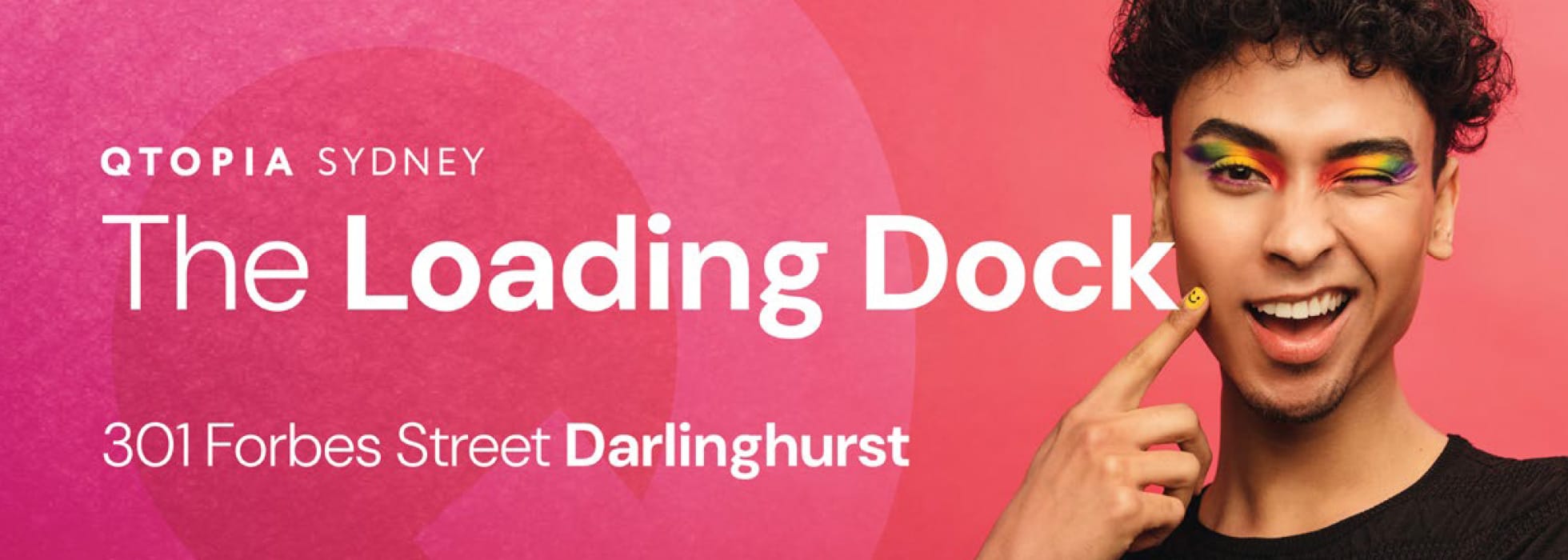
The Loading Dock
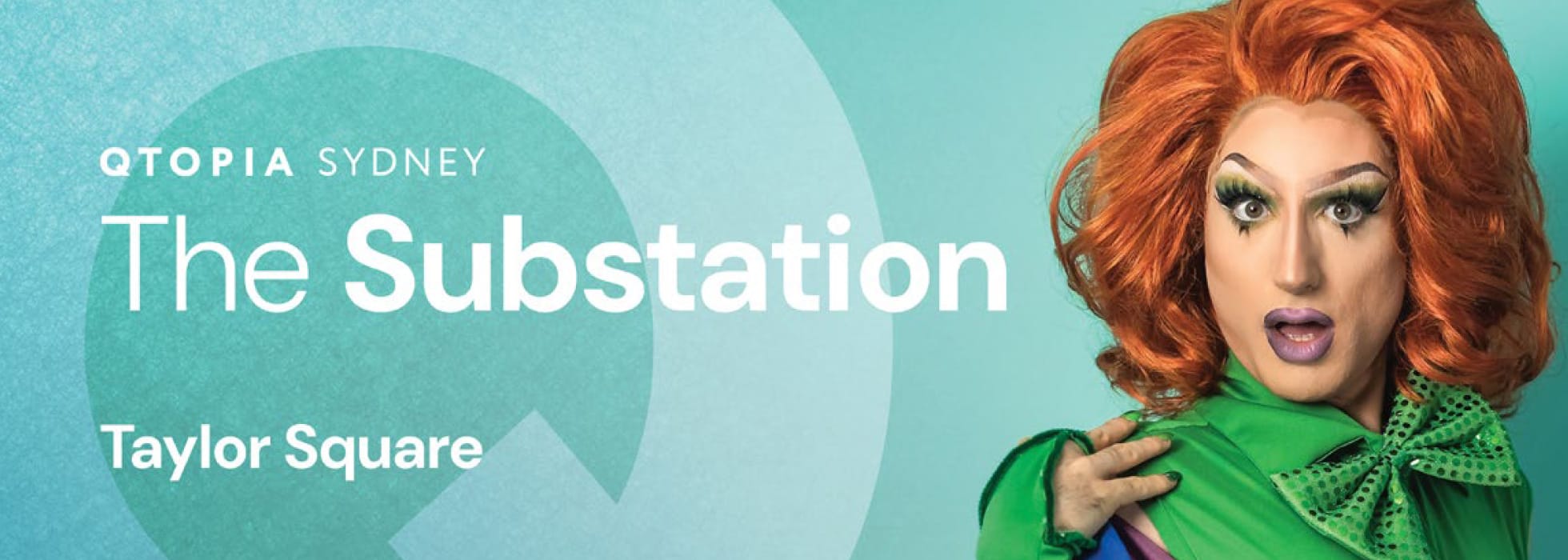
The Substation
Across the road from Qtopia Sydney is the Substation – a partially subterrain space in Taylor Square that hasn’t been utilised for 30 years.
Qtopia Sydney plans to revitalise the Substation through creating an immersive performance and exhibition space that will serve as a dynamic hub of LGBTQIA+ arts, culture and community engagement.
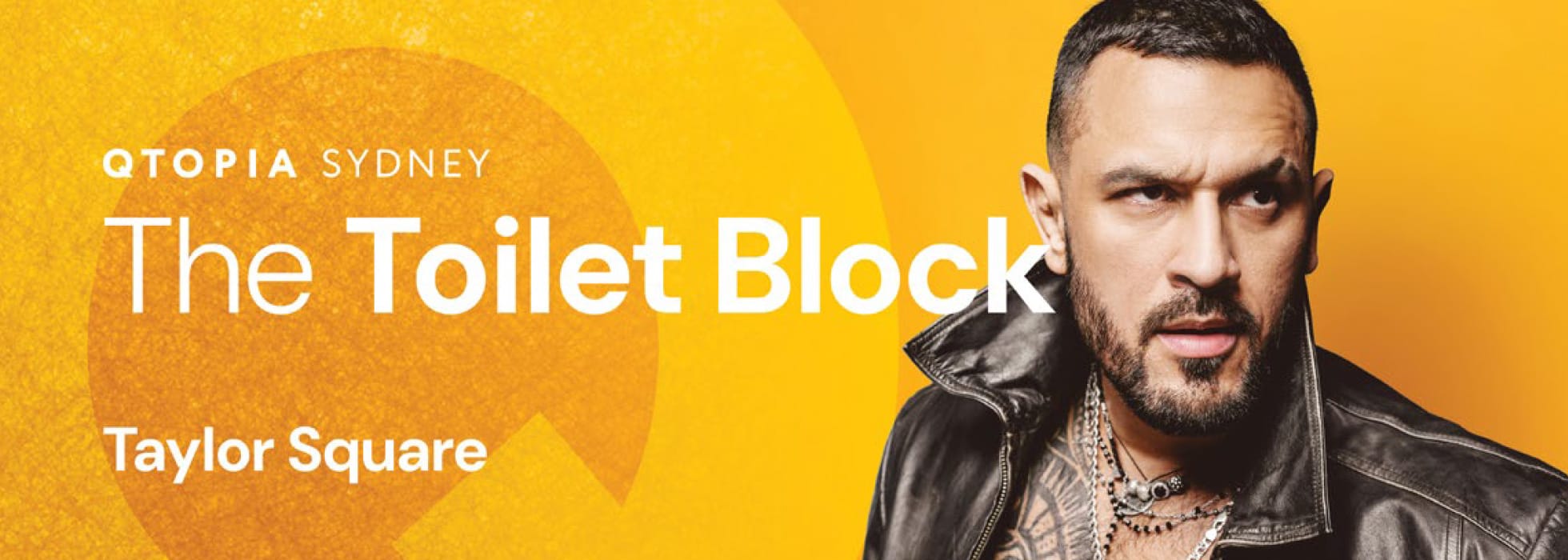
The Toilet Block
Across the road from Qtopia Sydney is the Substation – a partially subterrain space in Taylor Square that hasn’t been utilised for 30 years.
Qtopia Sydney plans to revitalise the Substation through creating an immersive performance and exhibition space that will serve as a dynamic hub of LGBTQIA+ arts, culture and community engagement.
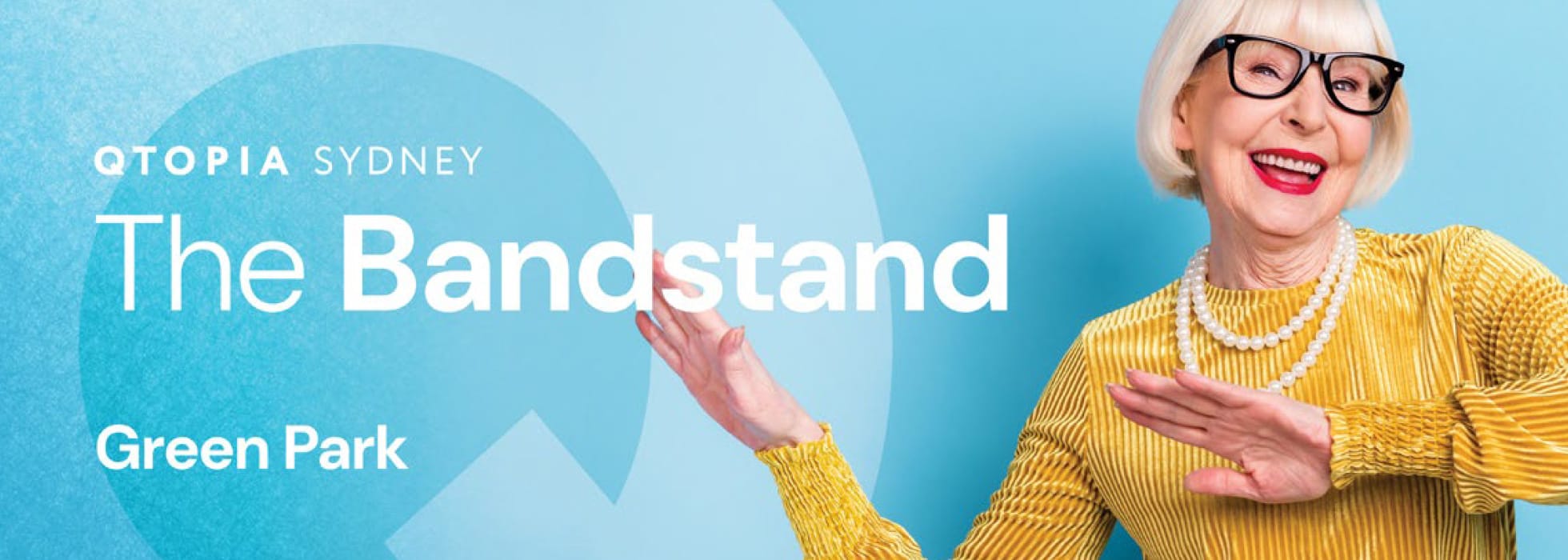
The Bandstand
Located in Green Park, across the road from St Vincent’s Hospital, the Bandstand will play host to live performance for new and emerging queer artists as well as smaller community events and temporary exhibitions.
